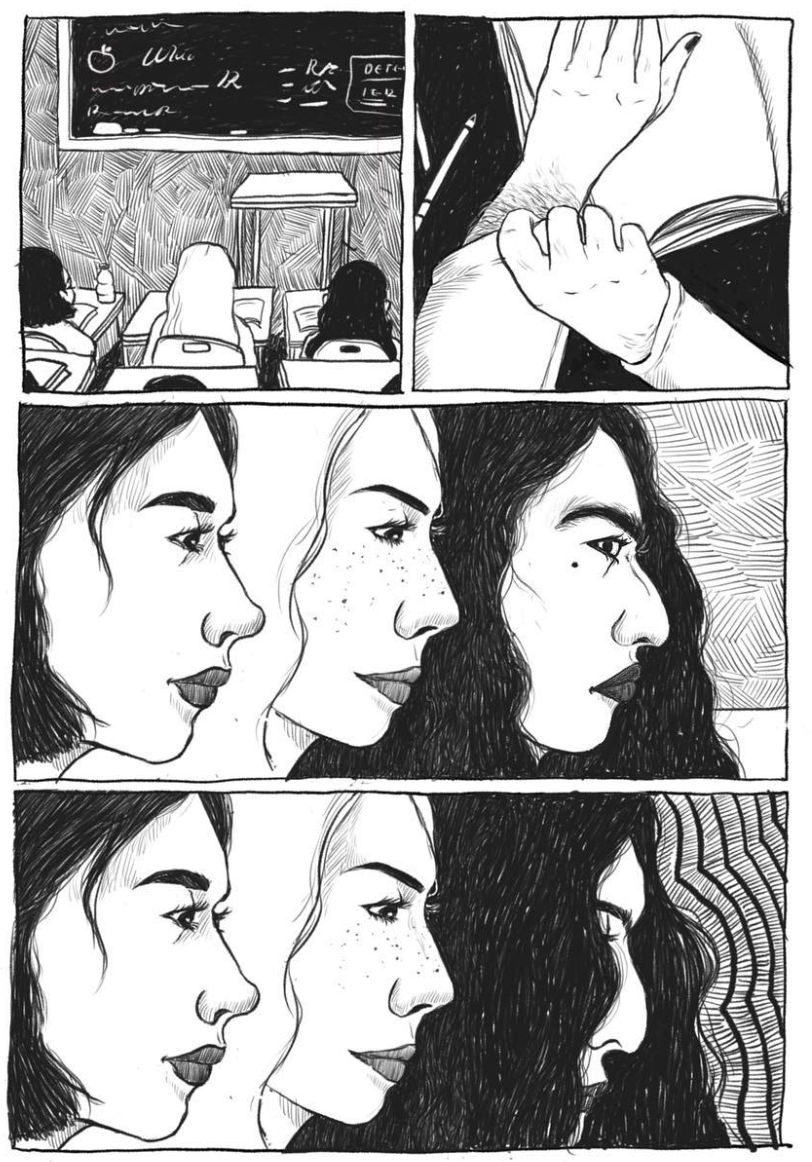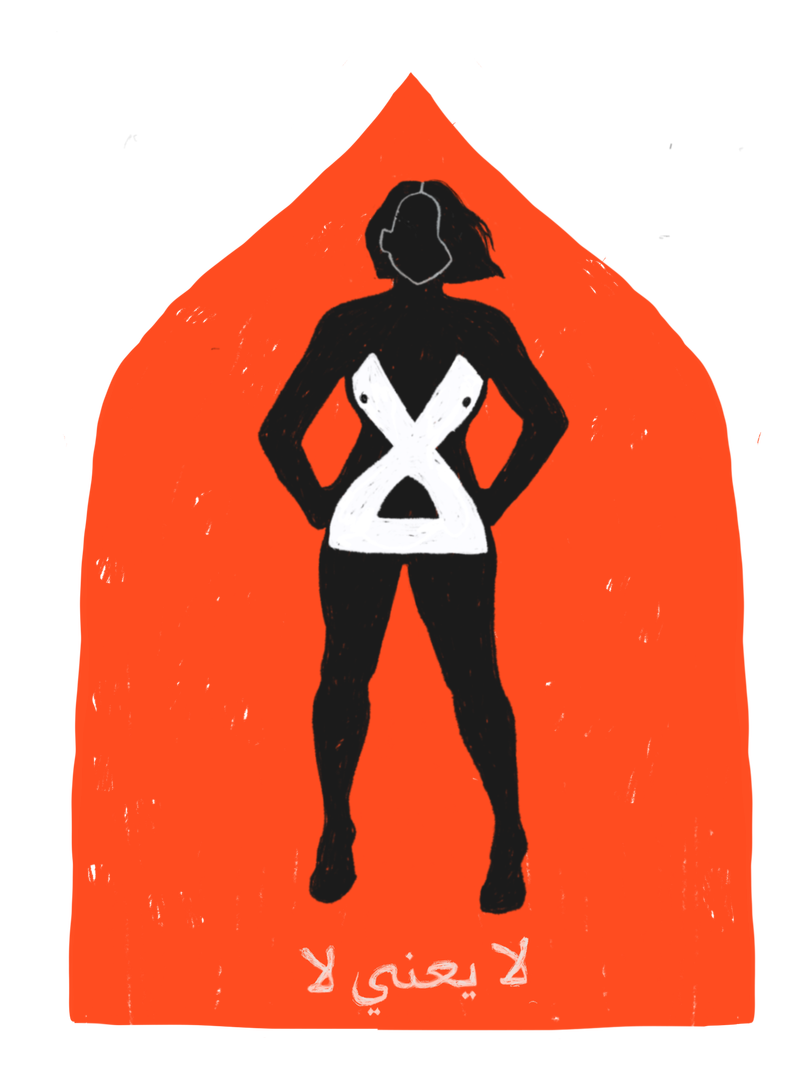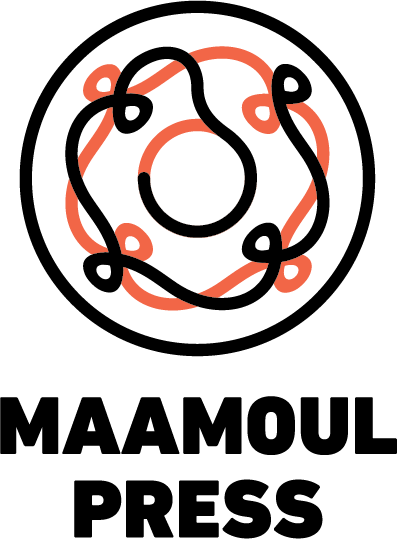Rama Duwaji on Western beauty standards and 'Razor Burn'
Originally published July 27, 2018 on Bigmouth Comix.

Rama Duwaji is a Syrian illustrator and comic artist. She is currently studying at Virginian Commonwealth University's School of the Arts. Rama's work often works to challenge Western beauty standards. Maamoul co-founder Leila Abdelrazaq talked to Rama about her process and motivations, as well as her short comic, Razor Burn.
Leila Abdelrazaq: Could you introduce yourself and tell us a little bit about you?
Rama Duwaji: I am a 21 year old illustrator from Syria, based and studying Visual Communication (a mix of illustration and design) in the US.
LA: When and how did you begin illustrating?
RD: I was making art since high school, mostly out of boredom in classes, and I’ve had sketchbooks since I was in 6th grade (they were the worst, but still part of the process,) but I only decided to pursue art/illustration as a career last minute in my last few months of high school while applying for university. I’m glad 17-year-old me decided to take the jump, because I honestly can’t see myself doing anything else. I think I started taking my art seriously during my first year in college, setting actual goals for myself, exploring topics within art and working on my social media presence.

LA: Your work often deals with themes of western beauty standards. How do you confront this in your work?
RD: I’ve always enjoyed drawing portraits. I think its really representation thats important, by integrating more diverse beauty in the art world, the standards change and move away from the western beauty ideal. I only really felt that I was starting to do this when I made Razor Burn, and got an overwhelming response to it.

LA: Can you tell us a little bit more about Razor Burn? How did the idea for this story come about? Why was working on it important to you?
RD: So my first little graphic novel ever, Razor Burn, was actually birthed in a semester long project in an art class about mental health, physical health, and societal issues. I decided to make an accessible graphic novel for young teens of color about the pressure of Western beauty standards, and the prevalence of mental health issues such as body dysmorphia, anxiety, and depression. The comic was based off the experiences of myself and many friends/family around me. It is a silent novel with no words, just images, (hopefully) making the book more accessible for people of different languages, socioeconomic, and education levels. It sounds cliche, but through the protagonist’s struggles with her body/facial hair, foreign features, and her experiences in a white majority school, I wanted anyone reading it, who might’ve felt bizarre and alone struggling with body image or mental health, to realize that hundreds and thousands of women have gone through the exact thing and came out thriving and confident despite it. When I started sharing some of the illustrations online, I had so many people approaching me, telling me that they had experienced the same thing, which emphasized to me that taboo issues in the MENA region such as mental health needed to be talked about.

LA: Most of your work is black and white, but you’ve started using some color. What is your relationship to color in your work? Why and when do you choose to use or not use it?
RD: I think I started using pen because it was just always the most accessible tool for me, since I was in high school. From then on, it just felt natural, I felt no need to add color to my work, and it felt forced when I tried. I recently started experimenting a little with color here and there, just to practice the skill and to shake things up a little. It helped me get out of an art block when I was feeling drained after big project that was solely in black and white. I also use select colors when making art aimed for children/young teens in the form of both book illustrations as well as murals, which is something that I found I enjoy.
LA: Can you share some of your creative inspirations? Whose work do you admire recently?
RD: Right now my creative inspirations are cave formations, after I visited some amazing caves in Beirut and fell in love with the endless lines and shapes the rocks make. As for actual people whose art I admire, they’re endless. Some top favorites at the moment are Carson Ellis, Rithika Merchant, Betsy Walton, Ronan Bouroullec, Rachel Levit Ruiz, and always, Lucian Freud.

LA: What tips do you have for aspiring artists and illustrators?
I don’t feel like I really have enough authority to give people tips yet, since I’m still kind of in the process of figuring out what works for me as an artist. But if I was to give someone advice it is: don’t box yourself into one style and medium or art form all too soon. I do enjoy painting and working with multi media and textures, but I don’t make much of it because I think I’m just better at ink drawings? Its also more accessible and more “likeable” for my Instagram audience, which definitely should not have been my focus, but its easy to fall into that validation trap. I’m just now in the process of working to find that sweet spot between my love for illustration and for some of the more fine art aspects that I enjoy. I also enjoy digital art and its flexibility, and that's ok, different mediums work for different things, and I think that mutifacetedness (is that a word?) in art is something to embrace and use to your advantage.
You can support Rama’s work by following her on Instagram @ramaduwaji, checking out her website, and buying prints of her work at her Redbubble shop.
© Copyright 2025, Maamoul Press
